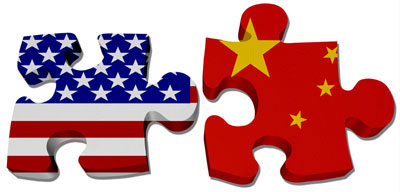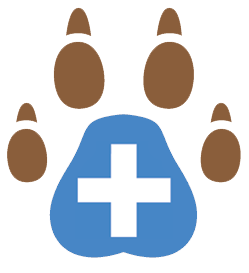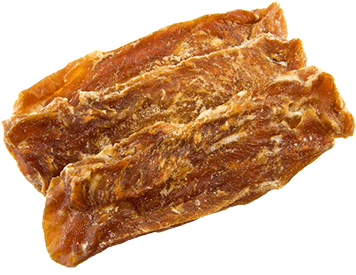Food Safety & China
 When most of us purchase foods, we often do not realize these foods come from a small handful of mega food corporations that now import a substantial portion of what we eat. As a result of companies like Monsanto suing farmers all over the US, and small farmers being regulated out of existence by the government, unless you buy local or from small farms, what we think of as the American farmer is long gone.
When most of us purchase foods, we often do not realize these foods come from a small handful of mega food corporations that now import a substantial portion of what we eat. As a result of companies like Monsanto suing farmers all over the US, and small farmers being regulated out of existence by the government, unless you buy local or from small farms, what we think of as the American farmer is long gone.
Monsanto, Syngenta, Bayer, Dow, and DuPont have collectively bought up over 200 seed companies, controlling and dictating what we can grow. In addition, companies like Coca-Cola, ConAgra, General Mills, Kellogg, Kraft, and M&M Mars own most of the US non-organic and organic food industry.
Although our food packaging is not legally required to detail countries of origin (only where it was packaged or processed), a significant portion of foods in the American diet are now made in China. In fact, China is the world's leading supplier of many staple elements in the US diet, including apples, pears, potatoes, and peas. Thousands of supplements sold in health food stores throughout the US are now manufactured in China. Despite the numerous product and food recalls (including the pet food recall that resulted in the sickness and death of thousands of pets and infants), the FDA has done little to address the serious issue of food safety and China.
Contamination
Asia Inspection |
The unfortunate consequence of the industrialization and centralization of the food supply is that if something goes wrong, it now goes wrong on a mass scale. And some of the biggest issues have resulted from food ingredients originating in China.
From E. coli to salmonella outbreaks, and contaminated food causing the death of pets, livestock, and people, it is clear that China is seriously lacking in the quality control department. In China, food safety is still at its infancy and the dangers from products manufactured in China are serious.
Some of the horror stories include:
- Chemical fillers such as melamine found in thousands of human and pet foods, with fatal consequences
- Rice sold tainted with cadmium
- 16,000 dead pigs in Shanghai's Huangpu river, a source of tap water for the people
- Multiple milk scandals
- Rat, fox, and mink meat covered with gelatin and red coloring to then be sold as mutton
- Widespread smuggling of products to avoid food safety inspections and tariffs
- Mislabeled products routed through other countries first before being processed in China
- Food made in small backyard operations which are filthy and insect-infested
- Heavy metal contamination (food from China is frequently found to contain high levels of arsenic, cadmium, lead, mercury, and other contaminants)
The Melamine Wake-Up Call
The shortcomings in China’s food safety system were brought to light when ingredients tainted with a chemical called melamine entered the global food supply — including products from well-known brands such as Mars, Heinz, and Cadbury.
|
But it wasn't only pets that were affected. The melamine was also fed to livestock when it entered the American food chain, and was used in in powdered infant milk formulas in China. The tragic result was that infants suffered 294,000 kidney-related illnesses, including 6 deaths. Melamine went on to be an ingredient used in thousands of products all over Asia, leading to kidney stones, urinary tract infections, ulcers, and skin and eye irritations. In July, 2007, the former Chinese Food and Drug Chief was executed due to scandals associated with food safety. |
Even though the melamine outbreak received the most headlines, lack of inspection has allowed a countless number of unsafe products from China to appear in grocery stores worldwide. Instead of using the common-sense approach of inspecting all imported food from China, the U.S. Department of Agriculture (USDA) is now allowing US food retailers to import even more food from China with little inspection. As we have seen, this is one of the contributions to the globalization of a tainted food supply.
Are Products From China Inspected?
Very little of the food and products received from China are inspected by the FDA upon arrival into the US. Even though the FDA has opened several offices in China, inspections of Chinese food facilities totaled only 85 in the entire year of 2011. The incoming food volume is simply too enormous. According to a recent study by the Democrats on the House Appropriations Committee in 2011, FDA inspections were a mere 2.3 % of the total of ALL imported food products.
The importation of Chinese foods into the US is continuing to rise and inspections in both China and the US simply cannot keep pace. This poses a growing danger to consumers as many of these products are not only in our grocery stores, but they are also provided to restaurants and the hospitality industry.
In 2011, more than half of food processing and packaging firms in China failed safety inspections, according to a report by Asia Inspection, a China-based food quality control company who calls this figure "alarming." More disturbing is that rodent fecal contamination was responsible for around 10% of this figure.
In 2011, China accounted for(1):
- 80% of tilapia
- 51% of cod
- 49% of apple juice
- 34% of processed mushrooms
- 27% of garlic
- 16% of frozen spinach
In early 2013, the House of Representatives committee on foreign affairs held a hearing on the threat of China's unsafe consumables, warning of the dangers to US consumers.
Pollution
Pollution of the water, air, and soil is another serious problem in China. The South China Morning Post reported “as much as 70% of Chinese rivers and lakes are polluted from industrial facilities such as chemical and textile plants.” The US embassy in Beijing releases air pollution reports every hour, and Americans living in Beijing depend on that information to decide whether the air is safe enough to venture outside. With the level of pollution that currently exists, it is almost impossible to produce safe food.
Residents of Zhejiang, China offered the equivalent of $50,000 to any government official who would dare to swim in the local waterway. To our knowledge, no-one has claimed their "prize"!
Food in the USA - Better, But Far From Perfect
Almost universally, food that is grown in North America is both cleaner and free of many of the contaminants seen in food from China. But this does not mean that American food is healthy food. On the contrary, it is highly processed and devoid of real nutrients, genetically modified, and filled with chemicals, pesticides, hormones, and other contaminants. The irony is that the standard American diet is far worse that the diet of most Asians.
There are many risks associated with food manufactured in the US. Our current food chain is the single biggest contributing factor to 3 of the biggest killer diseases today - obesity, heart disease, and diabetes. From US pig farmers using an additive called ractopamine in pig feed to produce lean meat, to chicken feed containing roxarsone (an arsenic-based food additive), to factory farming practices illegal in other countries (such as widespread antibiotic, hormone, and steroid use), the US has its own serious food safety issues. Ironically, China began requiring third party verification that US pork products were ractopamine-free.
Unfortunately, because many dangerous substances in our food are considered "legal" and "safe" by the FDA, we have a separate and much more serious problem.
The FDA: Failure to protect human & pet food...
What About "Organic" Foods?
Do not assume that when you buy organic food it means it is not from China. Some of the ingredients may definitely be sourced from China and still carry the "USDA Certified Organic" seal. Chinese farms that are organic are rarely inspected by US organic certifiers, and these certifiers are unable to independently inspect farms and assure compliance to the USDA organic food and agriculture standards, yet these farms can still use the USDA certified seal. The term "organic" and "China" do not belong in the same sentence.
Many organic "superfood powders" sold in North America use bulk raw materials from China. These foods are packaged and sold at top dollar in natural food retail stores, emblazoned with the USDA Organic label. The "USDA certified organic" is definitely a reputable stamp, and holds the bearer of the stamp to very high standards, but this can only be said for products within the US. The USDA does not focus their efforts on international soil. When it comes to superfoods (especially supplements), always look for a Third Party Verification seal.
RELATED ARTICLES
- The standard American diet: Fast-track to chronic disease
- Irradiated foods
- Microwaves - why you should ditch them
- The Dirty Dozen: What they are & why you should avoid them
- Understanding GMOs
- What are processed & refined foods
- Health dangers of foods sprayed with pesticides
- Why today's soy is NOT a healthy food
- Why stress is a silent killer
- Get off the diet merry-go-round
- Is your diet healthy? See how it stacks up
- Raising children naturally
- Healthy food choices for pets




 The pet food recall, which caused thousands of pets to die of kidney disease, was the largest recall in history. The widespread outrage triggered a congressional hearing. 60 million dog food units were recalled in 95 different brands, and after a lengthy investigation, it was found that the problem originated in China. Chinese manufacturers added a product called melamine to wheat flour to make the product appear to be 75% protein. It was then marketed as a "wheat gluten" or "rice protein" instead of melamine. Melamine is not toxic on its own, but when mixed with one of its own breakdown products (cyanuric acid), it forms crystals that block kidney function.
The pet food recall, which caused thousands of pets to die of kidney disease, was the largest recall in history. The widespread outrage triggered a congressional hearing. 60 million dog food units were recalled in 95 different brands, and after a lengthy investigation, it was found that the problem originated in China. Chinese manufacturers added a product called melamine to wheat flour to make the product appear to be 75% protein. It was then marketed as a "wheat gluten" or "rice protein" instead of melamine. Melamine is not toxic on its own, but when mixed with one of its own breakdown products (cyanuric acid), it forms crystals that block kidney function. Since 2007, the FDA has been aware of the illnesses in pets associated with the consumption of jerky pet treats. As of September 24, 2013, it received approximately 3,000 reports of pet illnesses that may be related to consumption of the jerky treats, most sourced from China. The reports involve more than 3,600 dogs, 10 cats, and include more than 580 deaths.
Since 2007, the FDA has been aware of the illnesses in pets associated with the consumption of jerky pet treats. As of September 24, 2013, it received approximately 3,000 reports of pet illnesses that may be related to consumption of the jerky treats, most sourced from China. The reports involve more than 3,600 dogs, 10 cats, and include more than 580 deaths.